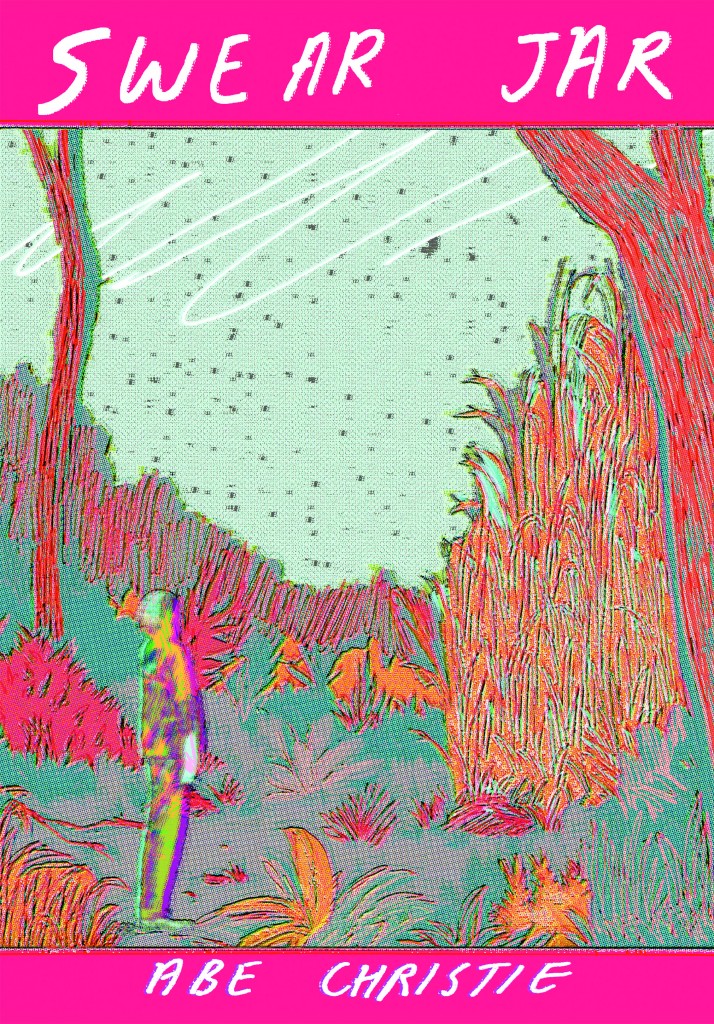Yes. A review. This time by the man who put sex into Zines -Mr Paul Ashley Brown, UK Small Press god and football self-injury specialist.
Over to you, Golden Balls!
___________________________________________________________________
 "Swear Jar" by Abe Christie
AveryHill Publishing.
"Swear Jar" by Abe Christie
AveryHill Publishing.
The majority of the "strips" or stories within Swear Jar follow a similar pattern or theme, an isolated figure indulging in some kind of self-reflection or introspection regarding their fate, wondering how life may pan out, or how they've reached the point we find them at. A six-page story at the start of the book features a lone female figure simply walking along while a disembodied narrator charts her life to the point at which she is ending it all. There is little detail in Christie's drawings, his figures are abstracted shapes, rarely with distinguishable features, stuck in simplified barren landscapes, yet this emptiness of detail reinforces the emotional charge of the writing, it's often contemplative thought peppered with both the poetic and banal. The seeming emptiness of the drawing has the effect of allowing you space as a viewer to be drawn in to the emotional resonance of the words, a visual subservience that rarely plays out in comics, the visuals often the dictatorial element.
Over to you, Golden Balls!
___________________________________________________________________

40 pages
B4
Colour/B&W
£6
It's
very rare these days I'm moved by anything in comic book form. All too
often there seems a continual heralding of some new brilliant auteur,
wrapped in the Emperor's New Clothes of the Graphic Novel form so
beloved by easily led idiots.
If you want to find anything
worthwhile that has a certain bite, look beyond the gutless
middle-classness of the Graphic Nawful to the lower rungs of the
independent small press and zine world, where creators ploughing their
own self-made furrows are developing their own new comic book
landscapes. Here's where the new frontiers of pictoral narrative will
emerge, and an exciting pathfinder is here in Abe Christie.
I
know virtually nothing about him, which makes his discovery all the
more exciting. I first came across him when a friend of mine showed me a
small, self-published A6 full colour zine of his, which is reprinted in
this collection. I immediately felt an affinity with his work, in it's
story of an isolated figure, seemingly marooned on an empty planet, and
his introspective musings on the end of his relationship with the friend
he loved. It's seemingly a straightforward story, yet the isolation of
the figure withinn a barren landscape echoes the character's inner
longing and reflection, a stark desolation of feeling and loss, as well
as his physical distance from humanity. It's brilliant in it's simple
beauty and the emotion it conveys. The majority of the "strips" or stories within Swear Jar follow a similar pattern or theme, an isolated figure indulging in some kind of self-reflection or introspection regarding their fate, wondering how life may pan out, or how they've reached the point we find them at. A six-page story at the start of the book features a lone female figure simply walking along while a disembodied narrator charts her life to the point at which she is ending it all. There is little detail in Christie's drawings, his figures are abstracted shapes, rarely with distinguishable features, stuck in simplified barren landscapes, yet this emptiness of detail reinforces the emotional charge of the writing, it's often contemplative thought peppered with both the poetic and banal. The seeming emptiness of the drawing has the effect of allowing you space as a viewer to be drawn in to the emotional resonance of the words, a visual subservience that rarely plays out in comics, the visuals often the dictatorial element.
While it
sounds like it may be serious or self-indulgent, Christie offsets his
emotional introspection with a deadpan sense of humour. It's no surprise
to find a character in the main story here, "Hank Cork Comics" mention
the film-maker Aki Kaurismaki. The Cork story has a similar feel to one
of his movies, a droll, off-kilter absurdity of a strip, where Hank
bicycles off to meet and rescue the Girl of His Dreams from his Nemesis,
someone called Jean. Along the way, he bumps into two friends, and
eventually gets to the house where the object of his desire is
apparently held or hidden. It reads like a surreal comic fairy-tale, a
non-quest with a non-ending that seemingly goes nowhere, but again,
beyond the good-natured ordinariness of the previous humour ("One time
my nemesis convinced me to donate a testicle for charity ! It's true I
have a scar !) there's the sad emotional punch of the final line in the
strip, as Hank muses that " it's a long way home without a bicycle....
and some kind of empty heart."
Christie's
work is oblique, absurd, funny and deadpan, emotionally engaging and
thoughtful. If one wanted to be harsh ( and I don't really) you could
argue it's narrow in it's content,and the drawing could be better, more
detailed, the character's more delinated to allow a greater emotional
attachment to be carried by them. But that's probably missing the point
somewhat. I like the sketchy immediacy of the drawing, it's both
impressionistic and expressionist, carried off by his minimalist colour
palettes on the stories. And the stories carry an emotional weight and
resonance in the language he uses, obtaining a thoughful profundity,
even if I wonder if it's entirely intentional. offset as it is by the
occasional humour.
Anyway, I love what he's doing, and I hope we see more of his original, idiosyncratic talent soon and often.
Anyway, I love what he's doing, and I hope we see more of his original, idiosyncratic talent soon and often.
Paul Ashley Brown

No comments:
Post a Comment